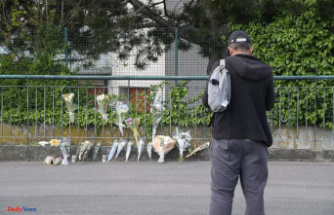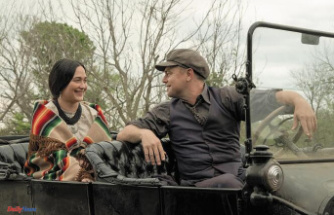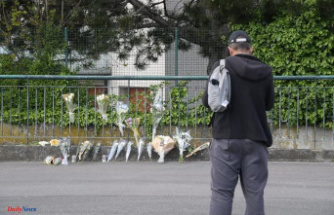A team led by UCR Riverside plant scientists has been given a five-year $5.1 million grant to do what no one, so far, has been able to do: find an effective treatment for citrus greening disease, officially known as huanglongbing.
The disease has attacked citrus crops in other regions of the globe with devastating results. Carried by a tiny winged insect, the Asian citrus psyllid, the bacteria causes the leaves on citrus plants to appear mottled and misshapen. The fruit remains green and has a bitter flavor. Infected trees usually die within three to five years.
Caroline Roper, a bacteriologist and plant pathologist, is heading a team of six UCR scientists, as well as five other researchers from other universities. The grant comes from the U.S. Department of Agriculture and UCR will receive $3.1 million of the total grant package.
The scientists will be working to find a bactericide that can kill huanglongbing and a way to get it into the inner tissues of the plants, which are the most affected by the disease. The effort will be a many-pronged attack.
“Everything we’re doing is in trying to eliminate the pathogen load,” Roper said. “We’re doing a lot of applied work to discover new bactericides. We’re trying to figure out pathways things take in the plant to gain access to this very difficult tissue, which is the phloem.”
Plants, she said, don’t allow easy access to the phloem tissue. In fact, when a plant is diseased, it often seals off that tissue, as it does when infected with huanglongbing.
“We’re doing a lot of very fundamental studies,” Roper said, such as “where do things go when you inject them into the trunk?”
They’ll also be studying other methods of access.
“We’re going to try several different ways,” she said, including “soil drench, injection and foliar applications. We’re going to try to do a really detailed study and figure out which ways are most effective. We might be able to get things into the tree more or less systematically and it might not affect getting into the fruit.”
The team includes two environmental engineers who will focus on the best way to deliver the treatments the plant scientists come up with.
The hope is to identify a method that can be applied commercially in agriculture groves. Part of the grant requires the team to perform a cost-benefit analysis on any proposed treatment.
California’s citrus industry is valued at between $1 billion to $3 billion. Experts say it is not a question of whether or not that industry will be hit by huanglongbing, but when.
The Asian citrus psyllid was first found in the state in 2008. It doesn’t always carry the huanglongbing bacteria and although it has spread throughout the Southland, only about three dozen trees have so far been identified with the disease. The first tree was found in Hacienda Heights in 2012. Two more were identified in Cerritos last month. Both scientists and growers say keeping it from commercial groves is paramount.
The disease has infected about 75 percent of citrus trees in Florida, resulting in more than $4 billion in lost citrus. More than 26 million citrus trees have been lost in Brazil.
Roper said she and other researchers feel the pressure to come up with a treatment for the disease before it has a chance to do the same kind of damage here.
“We feel it a lot,” she said, “especially when we talk to growers. Sometimes it’s heartbreaking, if you go to meetings and hear how much they’ve lost and you go out and see the orchards that have been lost in Florida. I try to stay grounded and focused and just keep plugging away at it.”
UCR is building a new citrus lab that will allow researchers to conduct experiments on live huanglongbing bacteria. Right now, the only place in the state where such research can be done is at UC Davis, which has a similarly sealed lab. Roper said having a local lab will speed the research.
Research team member Georgiose Vidalakis is director of the Citrus Clonal Protection Program, which provides uninfected bud wood for growers and nurseries. He said the public has a role to play when it comes to fighting citrus greening.
He encouraged people to purchase citrus plants only from reliable nurseries and home centers and to make sure the plants have a California Department of Food and Agriculture tag on them. The plants, he said, should also stay local.
“Even if it has a label and you buy it in L.A., don’t take it to the Central Valley,” he said. “That’s how (the disease) is going to get there, is by someone moving it.”
More information on the bud wood program is at ccpp.ucr.edu. Information on the Asian citrus psyllid and citrus greening is at cisr.ucr.edu.
Our editors found this article on this site using Google and regenerated it for our readers.












